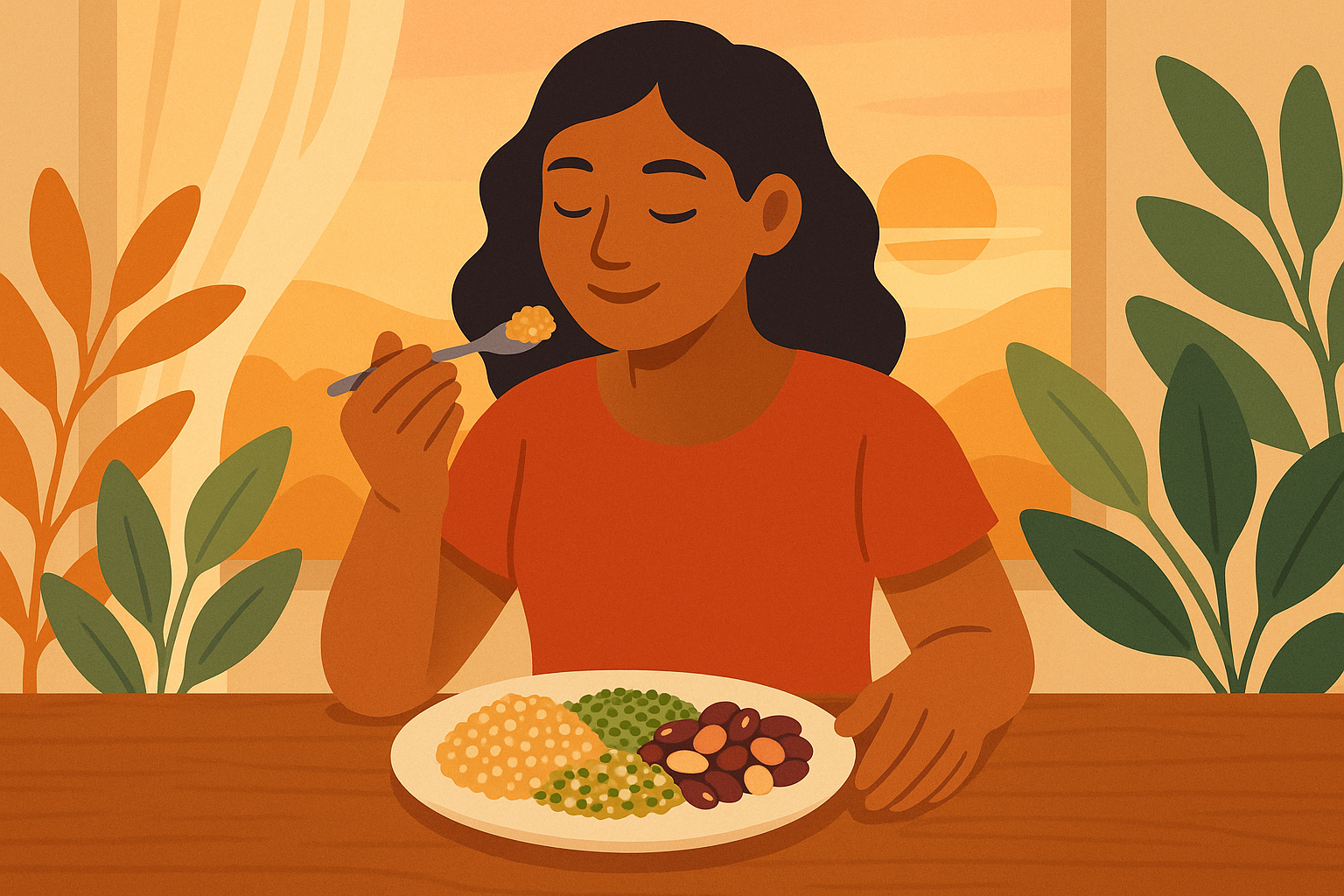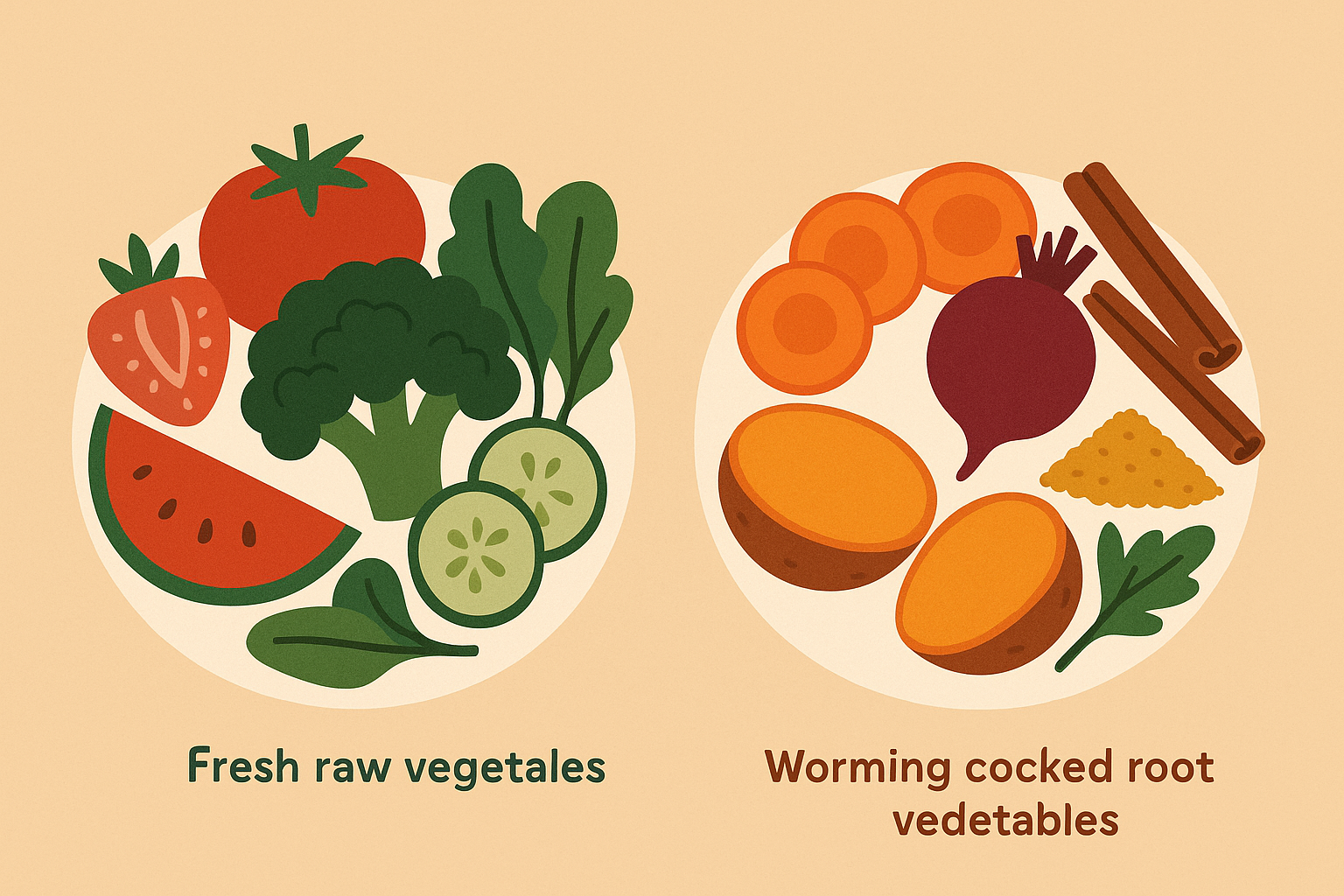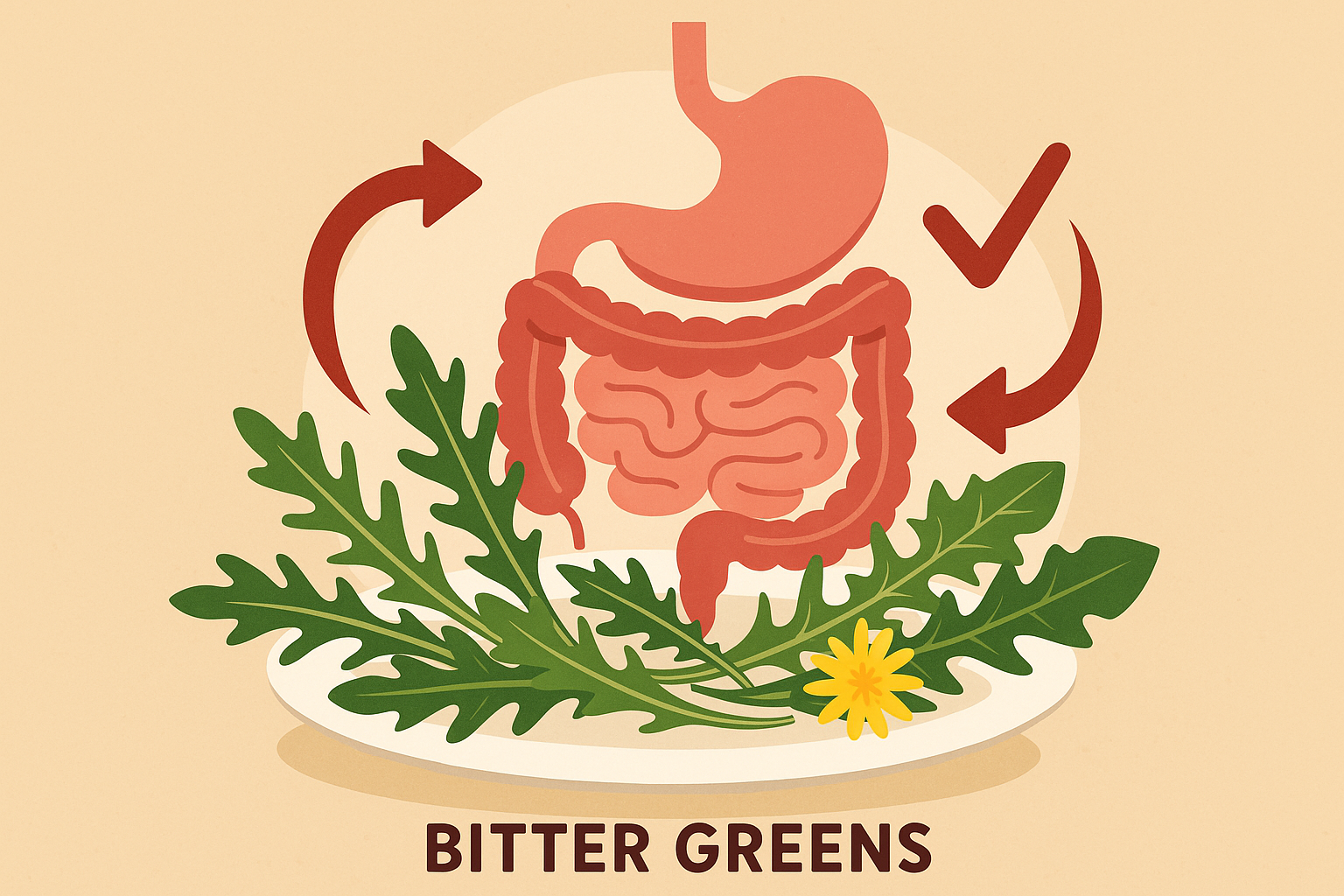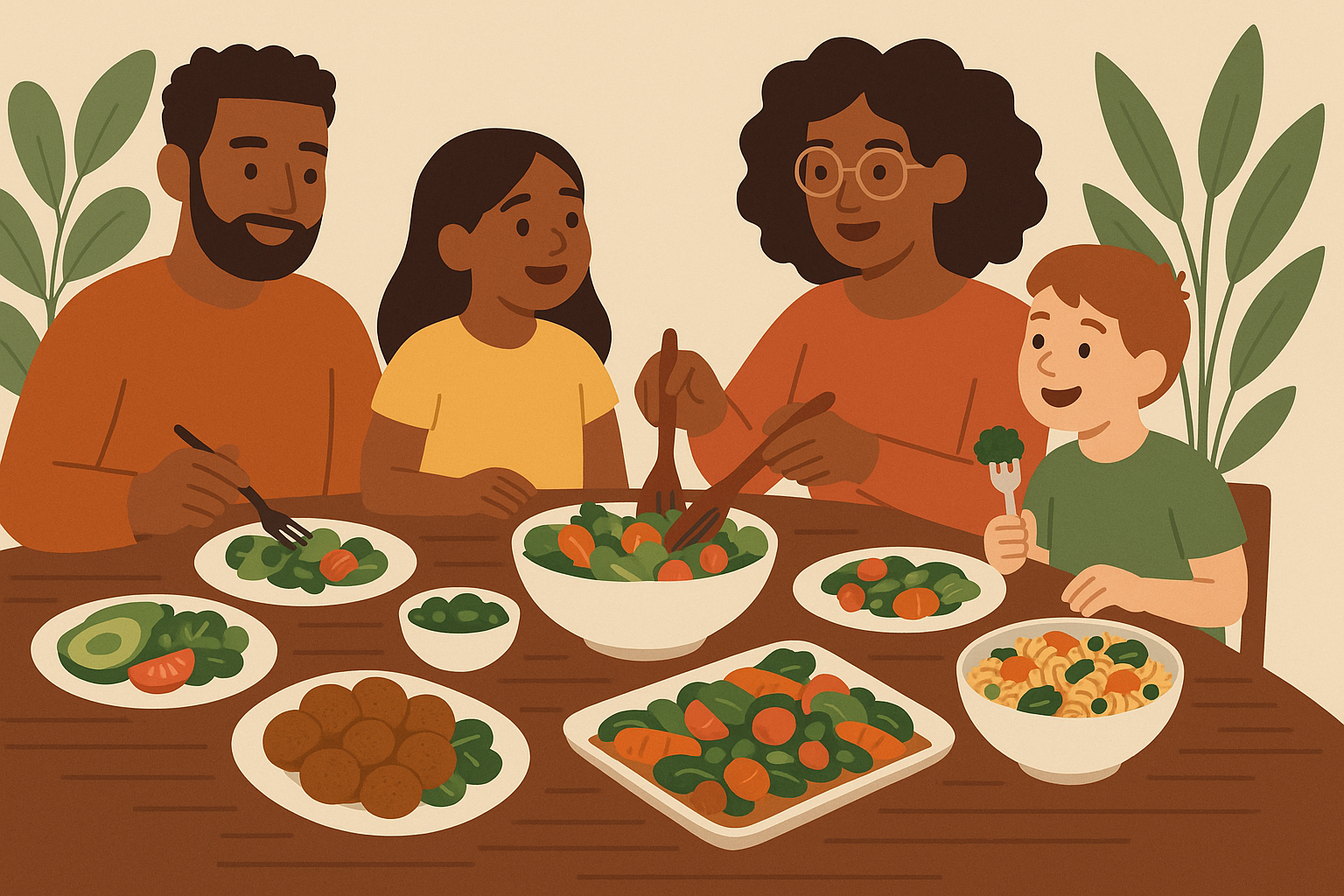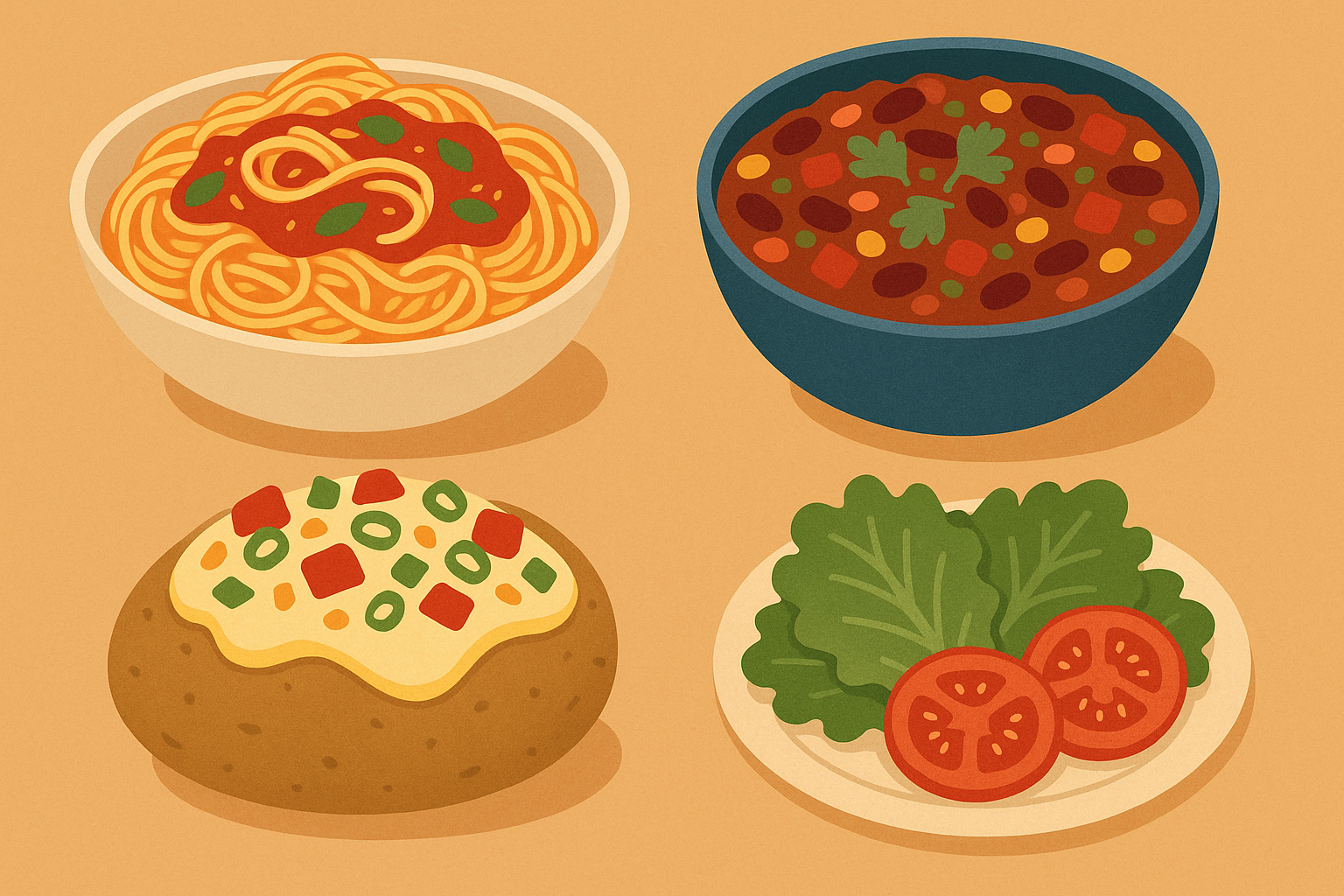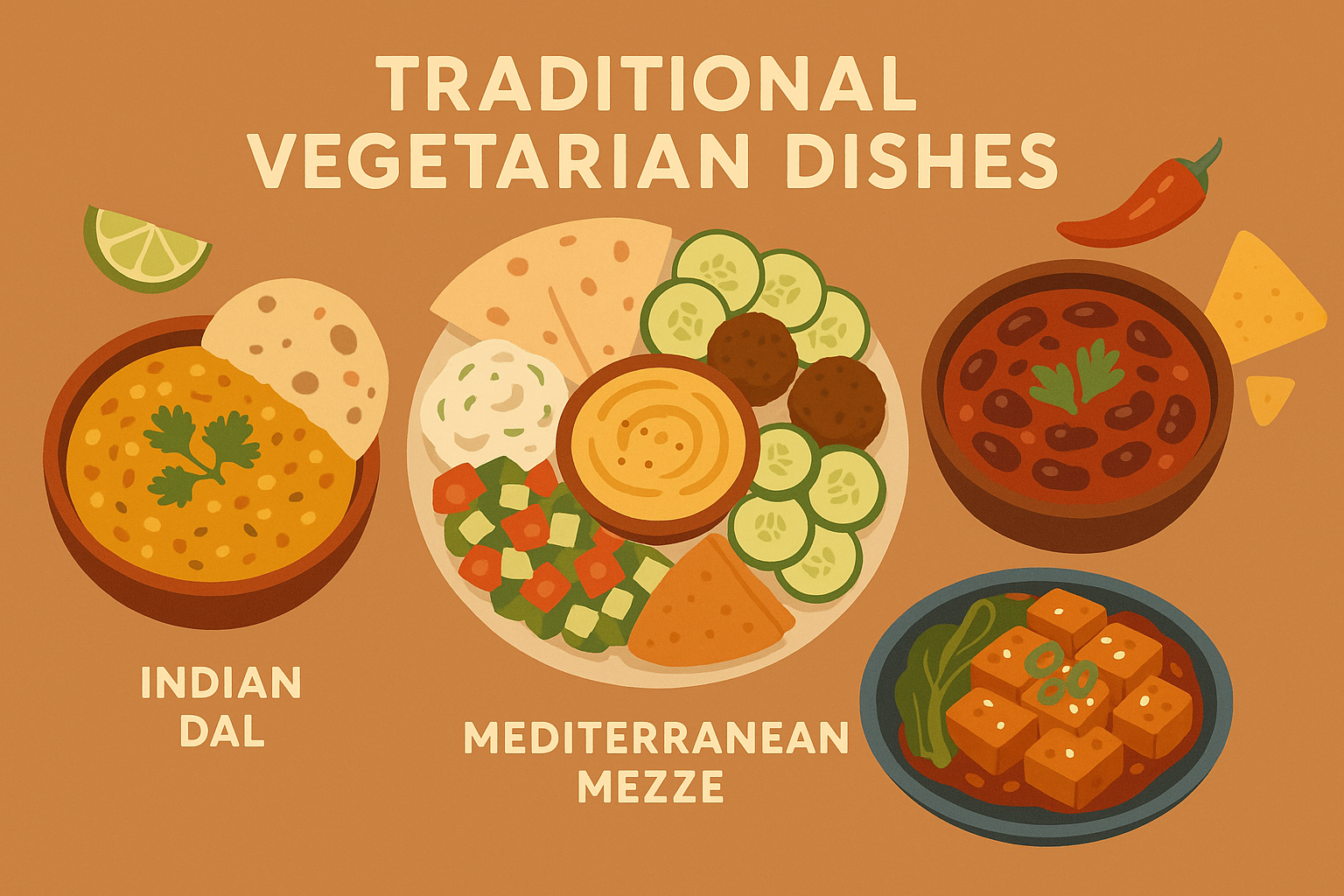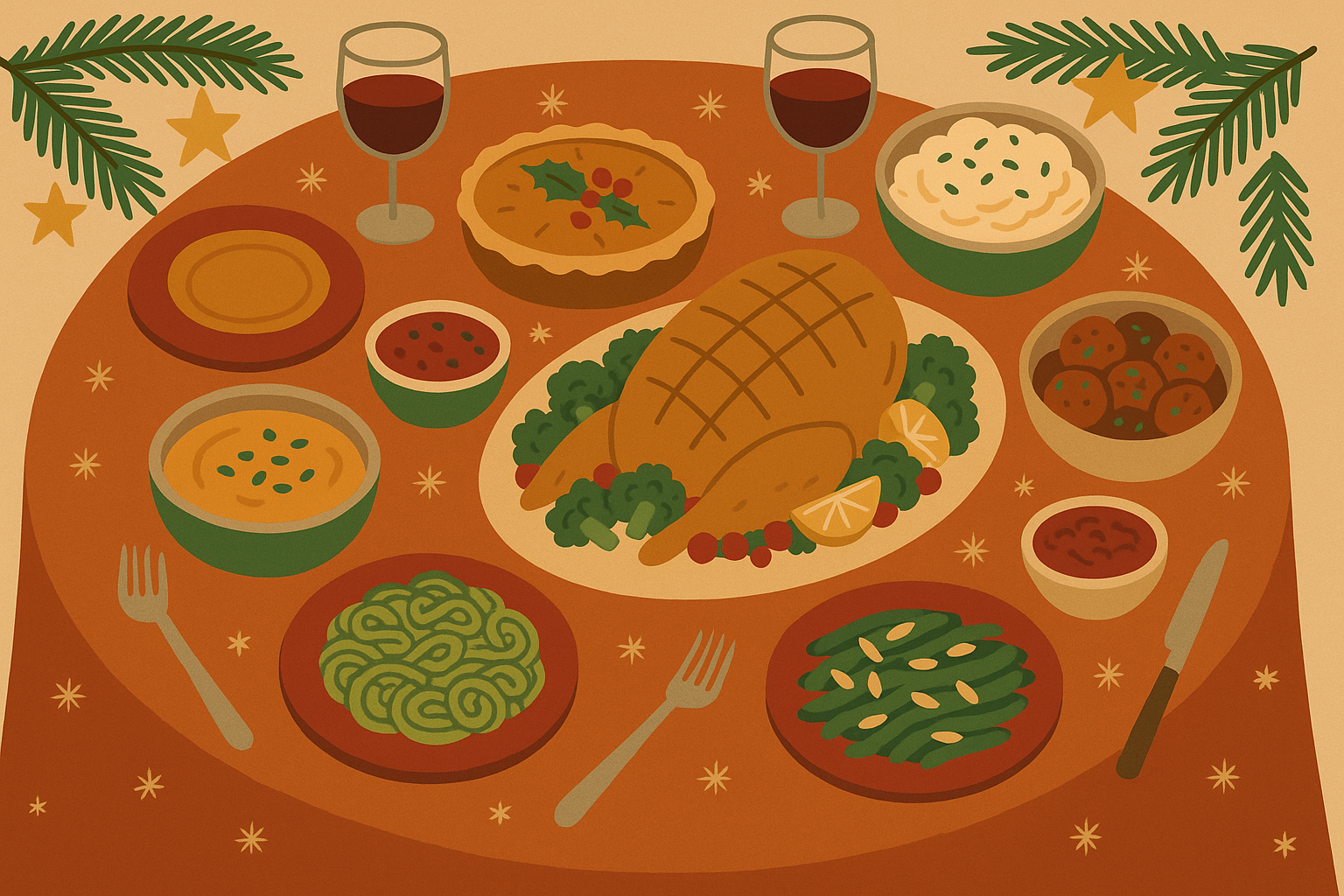What I Wish Someone Had Told Me About Vegetarian Meal Planning (Before I Spent Years Getting It Wrong)

Table of Contents
- Why Timing Your Plant Protein Actually Matters
- How Your Gut Basically Texts Your Brain About Food
- Why Your Body Wants Different Foods Throughout the Year
- Making Plant-Based Work When Your Family Thinks You’ve Lost It
TL;DR
- Your body loves plant protein in the morning – I had no idea timing mattered this much
- Women’s hormonal cycles mess with what you want to eat (and that’s totally normal)
- Your gut bacteria are pickier eaters than you think and will let you know about it
- Mixing up your plant foods every few days keeps your stomach happy
- Spring and winter call for completely different approaches to vegetarian eating
- Family meal planning is about sneaky compromises, not converting everyone overnight
- Your cultural food traditions probably have amazing vegetarian dishes you’ve never tried
With 4.5% of the UK population following a vegetarian or vegan diet, I’m definitely not alone in figuring this out as I go. But here’s what nobody tells you: successful plant-based eating isn’t about swapping meat for vegetables and calling it a day.
I’ve been vegetarian for eight years now, and I wish someone had just been honest with me from the beginning. Most vegetarian meal plans act like your body is some kind of machine that needs the exact same fuel at the exact same time every day. That approach left me exhausted, bloated, and constantly second-guessing whether I was doing something fundamentally wrong.
Everything changed when I stopped fighting my body and started paying attention to what it was actually telling me. Turns out your digestive system has opinions about when it wants to work hardest, your gut bacteria will literally send you signals about what they need, and your hormones create different cravings throughout the month for actual biological reasons.
Why Timing Your Plant Protein Actually Matters
I used to think protein timing was just gym bro science. Turns out I was completely wrong, and it explains why I felt like garbage on my vegetarian diet for the first few years.
Your body has its own schedule for processing protein – kind of like how you’re more alert at certain times of day. Understanding this made plant-based eating feel effortless instead of like I was constantly swimming against the current.
This becomes even more important when you’re learning how to boost your immune system through plant-based nutrition, since your body’s natural rhythms affect both protein use and immune function.
Your Morning Protein Sweet Spot Changes Everything
Somewhere between 6-10 AM, your body is basically primed and ready to absorb amino acids from plant sources. I discovered this by accident when I started eating overnight oats with hemp seeds every morning and suddenly stopped crashing at 10 AM.
Here’s what blew my mind: your body can absorb way more amino acids from plant proteins in the morning compared to evening. This isn’t about willpower or discipline – it’s just how your body works.
I started aiming for around 25-30g of plant protein within a couple hours of waking up, and the difference was immediate. My energy stayed stable all morning instead of requiring a mid-morning coffee rescue mission. The trick is pairing incomplete proteins during this window – think quinoa with black beans or oats with hemp seeds.
Don’t sleep on the vitamin C trick either. Adding strawberries to your morning oats or having orange slices with your tofu scramble can boost iron absorption like crazy. Your body is literally designed to work with you here – you just have to show up.
My friend Sarah, a working mom, struggled with afternoon energy crashes until she started her day with a protein-rich smoothie containing hemp seeds, spinach, and banana around 7 AM. Within two weeks, she noticed her energy stayed steady until lunch, and her desperate 3 PM coffee craving just disappeared. Her secret? Getting about 20g of plant protein with vitamin C-rich berries when her body was actually ready to use it.
The timing thing becomes even more obvious when you realize your digestive system has its own daily schedule.
When Your Stomach Actually Wants to Work Hardest
Your digestive capacity peaks somewhere around lunchtime, making this the perfect time for your biggest and most complex vegetarian meal. Remember how your grandmother always said lunch should be your biggest meal? She was onto something.
Your digestive enzymes, stomach acid production, and metabolism all peak during midday hours. It’s like your stomach is basically at its strongest around noon.
I completely flipped my eating schedule around this discovery. Now I eat about 40-50% of my daily calories between noon and 2 PM. This means my big Buddha bowl with multiple vegetables, grains, and legumes happens at lunch, not dinner.
The results? Way better sleep (because I’m not trying to digest a massive meal at night), more stable afternoon energy, and significantly less bloating. Your body wants to work with you – you just need to listen to what it’s telling you.
This midday focus on complex meals works perfectly with simple ways to beat bloat and improve digestion, since proper timing eliminates a lot of the digestive issues that make vegetarian beginners miserable.
| Time Window | What I Noticed | What Works Best | How Much |
|---|---|---|---|
| 6-10 AM | Body loves protein | Hemp seeds, quinoa, tofu | 25-30g protein |
| 12-2 PM | Can handle anything | Complex grain bowls, legumes | 40-50% daily calories |
| 6-8 PM | Wants lighter stuff | Light vegetables, fruits | 20-25% daily calories |
| 8+ PM | Basically wants to chill | Herbal teas, small snacks | Whatever’s left |
Building your vegetarian meal plan around these natural rhythms eliminates the guesswork and those awful energy crashes that made me question my life choices.
How Your Hormones Mess with What You Want to Eat (And That’s Normal)
I spent years wondering why my vegetarian diet felt amazing some weeks and absolutely terrible others. The answer was staring me in the face – my hormones were literally changing what my body needed, and I was fighting it instead of working with it.
Women’s menstrual cycles create totally different nutritional needs that most vegetarian meal plans completely ignore. Once I started syncing specific plant foods with my hormonal phases, everything got so much easier.
Your vegetarian meal plan should shift with your cycle, not fight against it. This sounds complicated, but it’s actually pretty simple once you get the hang of it.
Days 1-14: Your Body Wants Lighter, Fresher Stuff
During the first half of your cycle, rising estrogen levels create cravings for lighter foods while bumping up your need for iron and B-vitamins to support energy and blood building.
This is when my body craves fresh, raw foods like it’s nobody’s business. I load up on leafy greens, sprouts, and fresh fruits. Since iron needs are higher (especially if you’re still menstruating), I pair these lighter foods with iron-rich plants like pumpkin seeds and dark leafy greens.
Days 15-28: Time for Comfort Food That Actually Comforts
The second half of your cycle requires warming, grounding foods rich in magnesium and complex carbohydrates to support progesterone production and keep PMS symptoms from making you want to hide under a blanket.
The second half of your cycle is completely different. Your body wants warming, cooked foods and complex carbs – and fighting these cravings is basically pointless. This is when I focus on roasted root vegetables, warming spices like ginger and cinnamon, and magnesium-rich foods like dark chocolate and pumpkin seeds.
I used to think these cravings meant I lacked willpower. Now I work with them, and my PMS symptoms have gotten so much better it’s almost embarrassing how simple the solution was.
How Your Gut Basically Texts Your Brain About Food
This section completely changed how I think about food cravings. What I thought was lack of willpower was actually my gut bacteria sending very specific messages to my brain about what they needed to keep me healthy.
Your gut microbiome doesn’t just digest food – it actively communicates with your brain to influence food cravings and meal timing. Once you understand this relationship, you can work with your biology instead of constantly fighting random food urges.
Recent trends like “Bruce Springsteen’s One Meal a Day approach” show how extreme timing strategies are getting popular. But honestly, working with your gut bacteria’s natural communication patterns is way more sustainable than trying to force yourself into restrictive eating windows.
This gut-brain connection gets even more powerful when you understand how drinking vinegars support gut health, since fermented foods can dramatically improve the quality of bacterial communication in your vegetarian meal plan.
The Weekly Rotation That Keeps Your Gut Happy
Different beneficial bacteria thrive on specific plant compounds, and they get bored easily. When you eat the same plant foods every day, certain bacteria take over while others basically give up and die off. This creates digestive issues and can mess with your mood in ways you wouldn’t expect.
I started rotating plant families every few days, and it was like giving my gut a mini vacation. Days 1-2, I focus on cruciferous vegetables (broccoli, kale, cauliflower). Days 3-4 are all about the allium family (garlic, onions, leeks). Days 5-6, I prioritize berries and polyphenol-rich fruits. Day 7 is a combination day where I include smaller portions of everything.
The difference in how I feel is honestly remarkable. Better digestion, more stable moods, and way fewer random “I need chips RIGHT NOW” moments.
Weekly Gut Rotation That Actually Works:
- ☐ Days 1-2: Cruciferous vegetables (broccoli, kale, cauliflower)
- ☐ Days 3-4: Allium family (garlic, onions, leeks)
- ☐ Days 5-6: Berries and polyphenol-rich fruits
- ☐ Day 7: Mix it all up in smaller portions
- ☐ Pay attention to how you feel throughout the week
- ☐ Notice if your digestion improves (it probably will)
- ☐ Adjust based on what your body tells you
This rotation strategy transforms your vegetarian meal plan from a boring list of the same foods into something that actually supports your gut health.
Why Fermented Foods Should Be the Stars, Not Side Characters
I used to think of sauerkraut and kimchi as weird side dishes that health nuts obsessed over. Big mistake. Fermented foods should be the stars of your meal planning because they basically set the stage for everything else you eat.
Most vegetarian meal plans treat fermented foods as optional additions, but they should be the foundation that determines meal structure and timing for optimal digestive function.
Now I plan meals around fermented foods first. If I’m having kimchi, I know my gut will be primed for spicy, warming foods. If it’s a kombucha day, I pair it with lighter, more cooling meals. This approach has eliminated most of my digestive drama.
My friend Mark, a software developer, transformed his digestive health by starting each meal with a small portion of fermented vegetables. His go-to became sauerkraut with warming spices for dinner, which he discovered helped him digest complex legume-based meals without the usual bloating aftermath. After three months of this practice, his chronic indigestion just disappeared.
Structuring your vegetarian meal plan around fermented foods creates a foundation for optimal digestion and nutrient absorption – plus it makes meal planning way more interesting.
Your Body Actually Wants You to Start Meals with Bitter Stuff
Here’s a weird trick that sounds made-up but actually works: start every meal with something bitter. Arugula, dandelion greens, even a small piece of dark chocolate. This activates your vagus nerve, which is basically like hitting the “optimize digestion” button in your body.
Starting meals with bitter plant compounds activates the vagus nerve and optimizes digestive function for the entire meal, leading to better nutrient absorption and feeling satisfied with less food.
I was skeptical until I tried it. Starting meals with bitter foods makes me feel more satisfied with smaller portions, and I don’t get that uncomfortable “why did I eat so much” feeling after meals. Your body literally prepares itself to digest food more efficiently when you give it this signal.
Why Your Body Wants Different Foods Throughout the Year
Seasonal eating isn’t just about what’s available at the farmer’s market – your body actually has different nutritional needs based on the time of year. I learned this the hard way when my winter vegetarian meals left me feeling cold and completely depleted.
Your body’s nutritional needs shift dramatically with seasonal changes due to evolutionary metabolic programming. Most vegetarian meal plans ignore these ancient rhythms, missing opportunities to optimize energy and health throughout the year.
According to “diabetes.org research on plant-based protein sources”, beans and legumes are higher in carbohydrates than animal proteins, making seasonal timing even more important for maintaining stable blood sugar throughout the year.
Your vegetarian meal plan should shift with the seasons to support your body’s changing metabolic needs – and once you start doing this, it feels completely natural.
Spring: When Your Body Actually Wants to Detox
Spring represents your body’s natural detoxification season, and fighting this urge is basically pointless. Your body wants specific plant compounds that support liver function and lymphatic drainage while providing sustained energy for increased activity levels.
Spring isn’t about cleaning your house – your body wants to detox too, and this is when I focus on foods that support my liver’s natural detoxification processes without making it feel like punishment.
Spring detoxification works best when combined with immune-supporting nutrients like sulforaphane from broccoli, which becomes especially powerful during your body’s natural cleansing season.
The Two-Phase Thing Your Liver Does
Your liver detoxifies in two phases, and each phase needs different nutrients. I learned this after feeling worse during a “cleanse” – turns out I was supporting one phase but not the other, which created a backup of toxic metabolites.
In the morning, I eat Phase I supporters – cruciferous vegetables and citrus fruits. Afternoon is for Phase II supporters: sulfur-rich foods like garlic and onions, plus glycine-rich proteins from hemp seeds or spirulina.
Evenings are for lymphatic support with herbs like parsley and cleavers (yes, you can eat that “weed” from your yard, and it’s actually amazing). This timing prevents the toxic buildup that can happen when you support one phase but not the other.
Spring Detox Approach That Actually Feels Good:
- Morning (6-10 AM): Cruciferous vegetables + citrus fruits + green tea
- Afternoon (12-3 PM): Sulfur-rich plants + glycine proteins + bitter greens
- Evening (5-7 PM): Lymphatic herbs + light vegetables + herbal teas
- All day: Lemon water, dandelion tea, nettle infusions for hydration
Winter: Working with Your Body’s Hibernation Instincts
Winter vegetarian eating is completely different from summer, and fighting this is exhausting. Your body wants to conserve energy and stay warm, which means different foods and preparation methods that actually make sense.
Winter meal planning should support your body’s natural tendency toward metabolic conservation while maintaining stable blood sugar and mood through warming, grounding foods.
Your vegetarian meal plan needs to embrace warming, grounding foods during the colder months to support your body’s natural conservation instincts – and honestly, this is when comfort food actually serves a purpose.
Why Root Vegetables Are Winter Superfoods (Not Just Cheap Produce)
Root vegetables aren’t just what’s available in winter – they’re perfectly designed to sustain you through cold months. Sweet potatoes, beets, carrots, and parsnips contain concentrated minerals and slow-burning carbs that keep your energy stable when your body wants to hibernate.
Root vegetables store concentrated minerals and complex carbohydrates specifically designed to sustain life through winter months, but how you prepare them dramatically affects their bioavailability and warming properties.
The key is how you prepare them. Roasting at high heat caramelizes their natural sugars and makes minerals more available to your body. I roast a huge batch every Sunday and use them throughout the week in warm grain bowls and hearty stews that actually satisfy winter cravings.
| Root Vegetable | What It’s Good For | How I Cook It | Why It Works in Winter |
|---|---|---|---|
| Sweet Potatoes | Beta-carotene, potassium | Roasted at 425°F | Immune support, actually warming |
| Beets | Folate, manganese | Roasted whole, then peeled | Blood building, grounding |
| Carrots | Vitamin A, fiber | Roasted with herbs | Eye health, digestive warmth |
| Parsnips | Vitamin C, folate | Roasted until caramelized | Immune boost, satisfaction |
| Turnips | Vitamin K, calcium | Braised in warming spices | Bone health, comfort |
Making Plant-Based Work When Your Family Thinks You’ve Lost It
This is where most vegetarian meal plans completely fail reality. They assume you’re cooking for yourself, but real life includes kids who think vegetables are poison, a partner who considers salad a punishment, and family gatherings where your food choices become everyone’s entertainment.
The most overlooked aspect of vegetarian meal planning is creating systems that work within your existing family and social structures. This requires understanding family dynamics and cultural connections to food, not just individual nutritional needs.
The growing meal kit industry reflects this challenge, with “Bon Appétit noting that while most meal kits offer meat-free options, many lack variety”, forcing vegetarians to choose the same boring grain bowls week after week. This highlights why family-friendly meal planning requires actual creativity, not just substitutions.
Creating family-friendly vegetarian meals becomes easier when you master the art of plant-based cooking with the five elements of flavor, ensuring even the pickiest eaters find something they actually want to eat.
Successful vegetarian meal plan implementation requires strategic thinking about family dynamics, not just nutritional requirements – and a lot of patience.
Creating Bridge Meals That Don’t Scream “Health Food”
Bridge meals saved my sanity and probably my marriage. These are vegetarian dishes that don’t announce themselves as vegetarian to the rest of your family. Think hearty chili (without the meat), loaded baked potatoes, or pasta with rich tomato sauce that happens to be plant-based.
Successfully maintaining a vegetarian lifestyle within a mixed-diet household requires designing meals that satisfy vegetarian requirements while remaining familiar and appealing to non-vegetarian family members.
I identified my family’s five favorite flavor combinations and created vegetarian versions using umami-rich plant foods – mushrooms, nutritional yeast, and miso paste. The key is keeping familiar cooking methods and presentations while sneaking in the good stuff without making it obvious.
The One-New-Thing Rule (So Nobody Panics)
Don’t try to convert your whole family overnight – I learned this the hard way after serving a quinoa-kale-tahini bowl that my kids looked at like I’d completely lost my mind. Now I introduce one new vegetarian element per week while keeping everything else comfortingly familiar.
Introducing one new vegetarian element per week prevents family resistance while gradually expanding everyone’s comfort zone with plant-based foods without triggering the “mom’s on another weird health kick” eye rolls.
Week one might be adding hemp seeds to their regular smoothie. Week two could be using lentils in their favorite pasta sauce. Small changes add up without creating family drama or making dinner feel like a battleground.
My friend Jessica successfully transitioned her meat-loving husband using her “stealth vegetarian” approach. She started by replacing ground beef with finely chopped mushrooms and walnuts in his favorite tacos, keeping all the same spices and toppings. He didn’t notice the switch for three weeks, and when she finally told him, he admitted the “new” tacos actually tasted better and kept him full longer.
Family Transition Strategy That Actually Works:
- ☐ Identify family’s top 5 favorite meals
- ☐ Research plant-based versions that keep familiar flavors
- ☐ Introduce one new ingredient per week maximum
- ☐ Keep familiar cooking methods and presentations
- ☐ Use umami-rich plants (mushrooms, nutritional yeast, miso)
- ☐ Don’t announce changes until they’re accepted
- ☐ Have backup familiar foods ready for inevitable resistance
Building your vegetarian meal plan around family acceptance creates long-term sustainability instead of constant dinner table negotiations.
Honoring Your Cultural Food Heritage (Without Abandoning Your Roots)
Going vegetarian felt like I was abandoning my cultural heritage and rejecting the foods my grandmother made with love. This part gets emotional because food is how families connect across generations.
Vegetarian meal planning often conflicts with cultural food traditions, creating identity tension. But every cultural cuisine contains forgotten vegetarian dishes that connect you to ancestral wisdom while supporting your dietary choices.
Then I discovered that every culture has incredible vegetarian dishes that have been overshadowed by modern meat-centric interpretations. These foods connected me to my ancestors while supporting my health goals. It felt like coming home instead of giving something up.
Exploring cultural vegetarian traditions pairs beautifully with understanding plant-based Indian food’s mood-lifting properties, showing how traditional cuisines naturally support both physical and emotional well-being.
Adapting Holiday Traditions Without Losing the Love
Holidays were the hardest part of going vegetarian. Food is how my family shows love, and I felt like I was rejecting that love by not eating traditional dishes. The solution was adapting, not abandoning – but it took some creativity.
Food-centered social rituals require thoughtful adaptation strategies that maintain social connection and cultural meaning while honoring personal dietary choices without making everyone else feel judged.
I learned to make vegetarian versions of traditional holiday foods that captured the same flavors and emotional connections. My vegetarian stuffing is now requested by non-vegetarian family members, and my plant-based gravy has converted several skeptics who swore they’d never eat “fake” gravy.
The key is understanding that people aren’t attached to the meat itself – they’re attached to the memories, flavors, and traditions associated with the food. Honor those connections and nobody feels left out.
Holiday meal adaptations become more successful when you understand how to boost collagen without collagen for vegans and vegetarians, ensuring your plant-based holiday meals support both tradition and optimal nutrition.
Final Thoughts
Successful vegetarian meal planning isn’t about perfect nutrition or following rigid rules – it’s about understanding your body’s natural rhythms and creating sustainable systems that work with your actual life. When you align your plant-based eating with your biology, family dynamics, and cultural heritage, vegetarian meals become a source of energy and joy instead of stress and constant second-guessing.
The biggest mistake I made when I first went vegetarian was thinking it was all about the food. I obsessed over protein combinations, tracked every nutrient, and stressed about whether I was “doing it right.” What I learned is that sustainable vegetarian eating is about so much more than what’s on your plate.
Your body has ancient wisdom about when to eat, what to eat, and how to digest food optimally – you just have to listen to it instead of fighting it. Your gut bacteria are constantly communicating with your brain about what they need to keep you healthy, but most of us have forgotten how to hear these signals. Your hormones shift throughout the month, creating different nutritional needs that make total sense once you understand the pattern. The seasons change your metabolism in predictable ways that your ancestors knew by heart.
When you work with these natural rhythms instead of against them, vegetarian eating becomes effortless. You stop fighting cravings and start understanding them. You stop forcing yourself to eat the same foods every day and start enjoying variety. You stop feeling guilty about adapting recipes for your family and start feeling proud of creating inclusive meals that everyone actually wants to eat.
Most importantly, you realize that going vegetarian doesn’t mean abandoning your culture, your family traditions, or your social connections. It means finding creative ways to honor all of these things while taking care of your health and values – and sometimes that means sneaking lentils into tacos and calling it a day.
The vegetarian meal plan that works is the one you can actually stick with – not for a month or a season, but for years. And that only happens when you understand that successful plant-based eating is about working with your biology, not against it. Start small, be patient with yourself, and remember that even my meat-loving dad now asks for my “special” pasta sauce recipe. Sometimes the best victories are the quiet ones.

